INTRODUCTION
Insomnia is a sleeping disorder characterized by the inability to fall asleep and/or the inability to remain asleep for a reasonable amount of time. Stress is a common cause of sleepless nights. Insomnia is such a common condition, affecting millions of Americans, yet many people are not aware of the serious consequences of Insomnia.

YOGA AND INSOMNIA
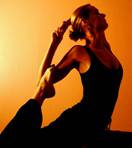
YOGA POSES FOR INSOMNIA
Happy Baby Pose
The happy baby pose, in yoga, is a great way to relieve stress and open up the hip muscles. The name of the yoga happy baby pose may have been inspired by the great delight infants take in their own feet. When in this position, you grab on tight to your own two feet. Get as close a look at them as any baby could wish for. The happy part for you is the calming effect of this pose. It is a good stretch of the thighs, lower back and hamstrings. It leaves your body feeling rested and warmed
Goddess Pose
The goddess pose opens the hips and chest while strengthening and toning the lower body. Goddess pose stimulates the uro-genital, respiratory and cardiovascular systems. Restorative Poses, like Goddess Pose are a boon to your practice when you are not feeling your best or just want do some passive stretching. These poses make use of props to support the body and allow it to open in new ways. They may be held for as long as 10 minutes.
Supported Forward Bend
This simple forward bend can be done at your desk. It's a soothing way to take a break in the midst of a busy workday. When you do a forward bend such as uttanasana, the weight of your trunk moves out of alignment from the rest of your body.
Shoulderstand
Shoulder stand is an excellent pose that benefits the whole body. Its Indian name is Salamba sarvangasana.This asana is great for the thyroid and parathyroid glands, which are located in your neck. It increases the blood supply to them, as well as to the chest. Probably for this reason it's so good for a range of conditions.
Plow Pose
In Sanskrit, "Hala" means "Plow". This posture is called plow pose because in the final position the body resembles the Indian plow. Hal asana is a basic seminal inversion pose. It is considered one of the variations of Sarvangasana (the Shoulderstand). Halasana is often one of the first inversions to be practiced after Adho Mukha Svanasana (the downward facing dog pose) and Prasarita Padottanasana (the wide-legged standing forward bend). Inversions bring fresh blood and oxygen to the brain which is revitalizing and refreshing.
Double Wind Releasing Pose
This yoga posture is called the wind releasing pose because it helps to release gas. However, in this case we're trying to release the lower back and shoulders. Inhale, and draw your knees to your chest. Then as you exhale, lift your body up toward your knees. Draw your shoulders down toward your feet. Breathe. Stay here as long as you feel comfortable.
Corpse Pose
Corpse pose seems very simple on the outside. But this yoga posture can be very difficult when the mind is racing. The Corpse Pose or Savasana may look like a simple relaxing pose that is done in between or after an Asana, but this exercise requires a lot of concentration and will develop through continued practice. This exercise, if done correctly, will stimulate blood circulation and will lessen or relieve fatigue, nervousness, asthma, constipation, diabetes, indigestion, and insomnia. It will also improve one's mental concentration.
YOGA ASANAS FOR INSOMNIA
TADASANA
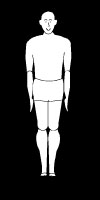
This is the basic and the starting yogic exercise. "Tada" refers to a mountain. This refers to stand like a mountain. This is nothing but to know the correct standing position.
Steps
• Come to stand with the big toes touching.
• Lift up all your toes and let them fan out, and then drop them down creating a wide solid base. You can separate your heels slightly if your ankles are knocking together uncomfortably.
• Bring your weight evenly onto all four corners of both feet.
• Let the feet and the calves root down into the floor.
• Engage the quadriceps and draw them upward, causing your knee caps to rise.
• Rotate both thighs inward, creating a widening of the sit bones, and tuck your tailbone in between the sit bones.
• Tone the belly, drawing it in slightly.
• Widen the collar bones and make sure the shoulders are parallel to the pelvis
• The neck is long, the crown of the head rises toward the ceiling, and the shoulder blades slide down the back.
SALABHASANA
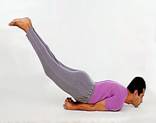
Shalabhasana is useful for stomach. Lumber, waist portions and to the legs. Practice of this asana removes constipation. The waist remains trim if you practice Shalabhasana regularly.Salabha Asana is a reverse posture to the Bhujanga Asana (Cobra Posture), which gives a backward bend to the spine and is said to be very effective for insomnia. It is recommended to practice the Salabha Asana after releasing the Bhujanga Asana.
Steps
• First rest in Makarasana. Then keep the hands below thighs and raise up both the legs together.
• The legs should be as straight as possible.
• Inhale and remain in this posture for a few seconds and then relax.
• Repeat this three to six times initially. After gaining sufficient experience you can remain in Shalabhasana for a longer duration, at a stretch.
• For easy practice start with each leg separately for six times. Then you can try raising both the legs.
BHUJANGASANA
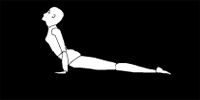
In diseases like cervical spondylysis, insomnia, bronchitis, asthma and eosinophilia, it has a great therapeutic value. Bhujangasana is one of the most important Yoga poses. Bhujangasana is also called by the name of Cobra pose. Begin inhaling and raise your chest and head slowly to the maximum limit it can reach. While performing the exercise remember to keep your hip muscles tight so that your lower back is not injured.
Steps
• Lie in the prone position with the forehead resting on the floor, legs straight and feet together, toes pointing backwards, arms bent at the elbows, palms flat on the floor, shoulders and arms on the sides of the chest and fingers kept straight And together.
• Inhale slowly and the raise the upper body (head, neck and chest). Look at the ceiling (sky) with the neck bent as far back as possible. For raising the body, only the back muscles are to be used.
• Do not push up with your arms. Waist, legs and toes should remain on the ground. Raise your body as much as possible, holding the position and retaining the breath for a few seconds.
• Exhaling slowly, return to the original position. Repeat three to four times.
SHAVASANA
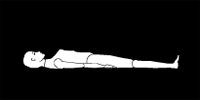
Shavasana is relaxation of body and mind in the position of lying on the back. This asana helps in relaxing mind and body and helps in restoring energy. It is a relaxing posture intended to rejuvenate one's body, mind and spirit. While shavasana is a good way to reduce stress and tension it is not recommended for meditation as it has a tendency to induce sleepiness.
Steps
• Lie on the back.
• Keep your spine, navel & pelvic in one line.
• Keep feet apart.
• Keep arms on the each side of body, palms facing to sky.
• Keep neck right or left side.
• Close your eyes & slowly try to concentrate each part of the body & try to relax that part.
• Breath normally.
YOGA-NIDRA
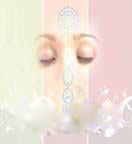
Yoga-nidra is an efficient method of inducing complete physical, mental and emotional relaxation while maintaining consciousness. In fact Yoga Nidra not only brings physical and mental relaxation but also prepares the mind for spiritual evolution. It is mainly associates with pratyahara (withdrawing senses form sense-objects) and dharana (concentration).In normal sleep consciousness is absent and the unconscious is in charge. In Yoga Nidra the consciousness directs the unconscious to relax. Yoga Nidra is a 'sleep' where all the burdens, stress, strain, anxiety are thrown off to attain more blissful state of awareness, a relaxation much more intense than ordinary sleep.
ASTROLOGY
Yoga is the primary level which consists of bodily exercises to build a ground for Meditation. The word yoga had been derived from the Sanskrit word yuj which means to join to unite to balance or to integrate. Yoga is a system of exercises for the mental and physical well being. It combines stylized poses with deep meditation and breathing. According to Patanjali, within the human body there are channels called Nadi and centers called chakra. According to astrological reports for yoga asanas the above mentioned asanas are said to be effective for those who come under the following zodiac sign.
• ARIES